Dogs spend a lot of time staring at their humans. While many dog owners don’t mind this, some feel uncomfortable when their dog’s eyes follow them everywhere.
But what, exactly, does it mean when our dogs stare at us? Is it a sign our dogs love us or a form of manipulation? Should we maintain eye contact, or look away? Give them a treat, or wait for them to leave?
Let’s explore the ins and outs of dogs’ staring behavior!
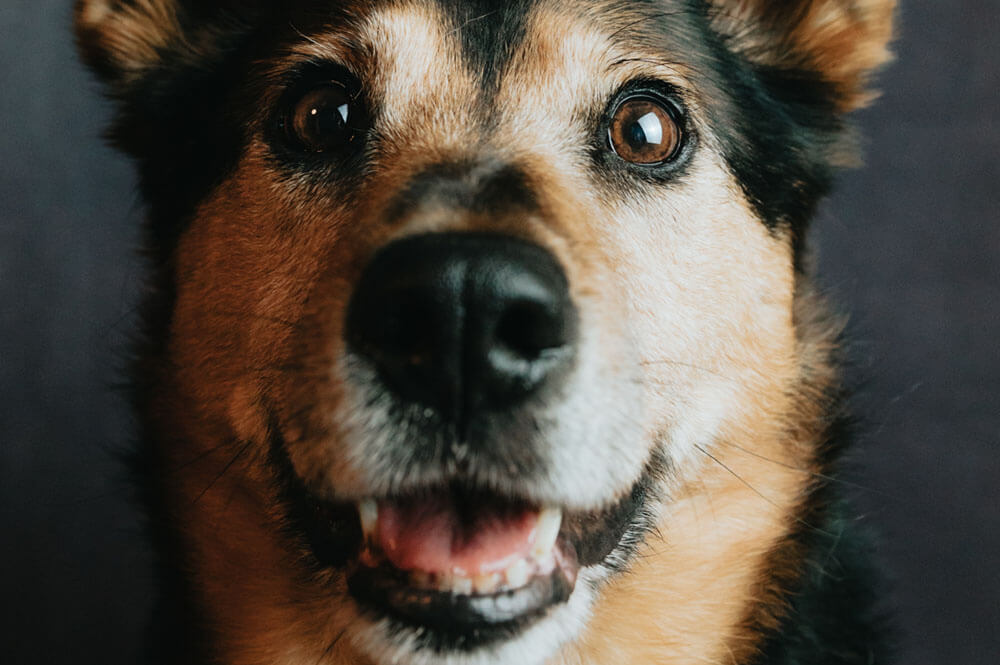
The Reasons Your Dog Stares at You
Because dogs can’t speak, they use other strategies to communicate what’s on their mind. Licking, barking, and howling are all tried-and-tested communication techniques. And of course, dogs wouldn’t be dogs if they don’t also stare at their owners.
With that in mind, here are the various reasons behind your dog’s stare.
1. Your dog loves you
In most cases, the answer to “Why does my dog stare at me?” is as simple as “Your dog loves you.”
There are several ways to tell when a dog is staring at you out of affection. Soft (and maybe slightly squinty) eyes, relaxed ears, a relaxed posture, light panting, a gently wagging tail, and normal-sized pupils are all signs your dog loves you and feels happy to be with you.
In fact, the idea that dogs look lovingly into their owners’ eyes is backed by science. A 2015 Japanese study discovered that when dogs and their owners stared into each others’ eyes, both canine and human brains released the chemical oxytocin. Also known as the “love hormone” or “cuddle hormone,” oxytocin strengthens the bond, trust, and affection between individuals, which is why it’s also released when the mutual staring is between a mother and her baby, lovers, and friends.
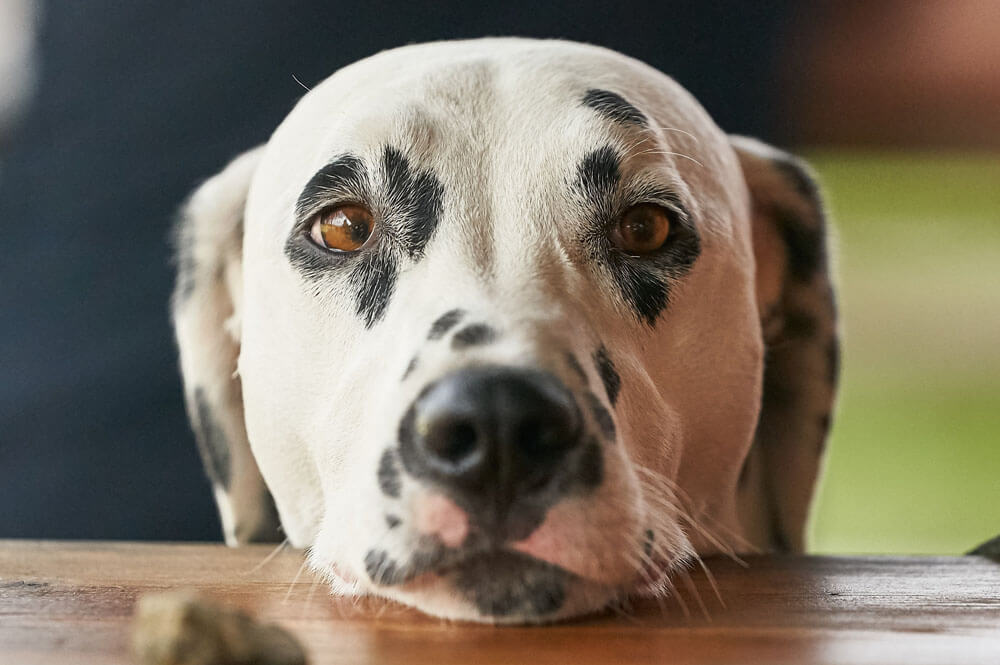
2. Your dog is gathering information/figuring you out
Dogs are intelligent animals; often, they can learn information about humans, critters, and their surroundings by observing them. So if you catch your pup staring at you, they may be paying attention to your nonverbal cues to understand what you’re up to or what you want them to do.
For example, if they see you putting on your shoes, they’ll know you’re about to leave the house. They’ll then watch you to see if you’re also going to bring out their leash, in which case they’ll know you intend to walk them. Similarly, if you use vocal and hand signals whenever giving your pet instructions, they’ll observe you in anticipation of those signals so they can determine what actions you want them to take.

3. Your dog wants something
When your pup stares at you with longing eyes, it’s likely they want something only you can give them.
Maybe they’re hungry and they desire food. Maybe they’re bored, and they want to be walked or play with the toy you’ve hidden. Or maybe your dog wants to be let out into the yard so they can go potty. Whatever their needs are, when a dog gives you a longing stare, they may be requesting your assistance. They may even use the “puppy dog eyes” trick to increase their chances of getting what they want.
You may have unintentionally taught your dog that staring is an effective way to communicate their needs to you. While this isn’t necessarily a bad thing, it can also lead to issues.
For instance, do you find your dog watching you whenever you’re having a meal? You may have inadvertently reinforced this “begging” behavior by giving them a tasty morsel the last time they watched you eat. To put an end to this habit, ignore your dog every time you find them waiting beside the dinner table, staring at you.
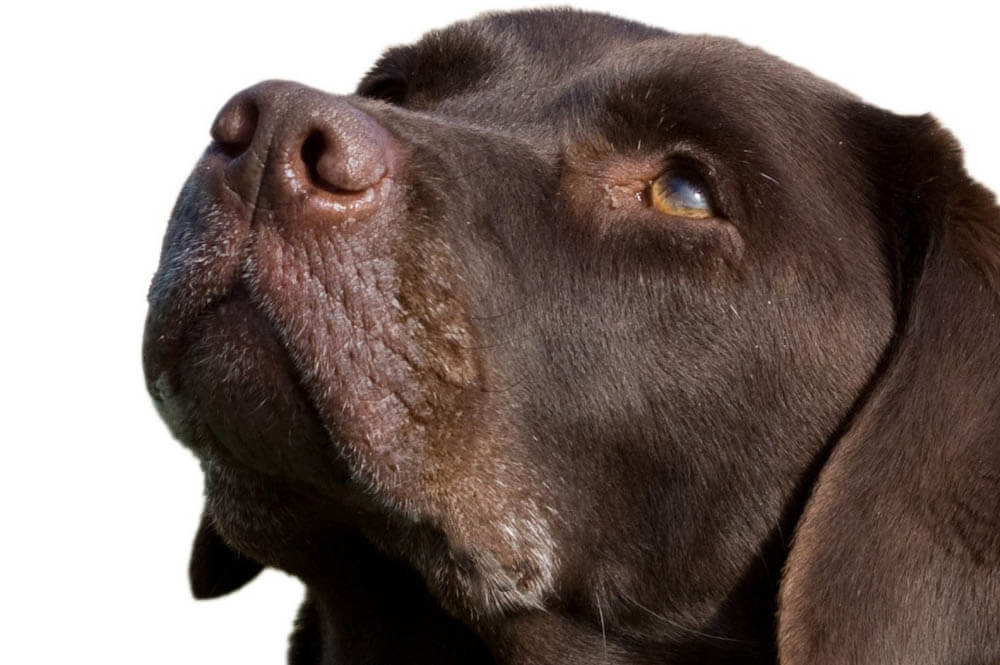
4. Your dog is telling you something’s wrong
If your dog is hurt or ill, they may stare at you pleadingly. In such cases, they know something’s wrong, so they try to make eye contact with you in the hopes that you can do something to make them feel better.
Check to see if their eyes are unfocused or glassy, and observe them for health issue symptoms such as lethargy, restlessness, reduced appetite, pain, etc. Contact a vet if you do notice such symptoms.

5. Your dog craves your attention
As discussed above, when a dog is trying to catch your attention, they usually want your help with something. Sometimes, however, that attention is all they need.
If you’ve been too busy with work to interact with your dog, or you’ve been paying more attention to the new baby, your pet probably feels neglected. Therefore, dogs stare at their favorite person because they want their affection.
To gain the attention you’ve denied them for so long, neglected dogs may even resort to undesirable behavior – such as chewing your shoes or pooping indoors.
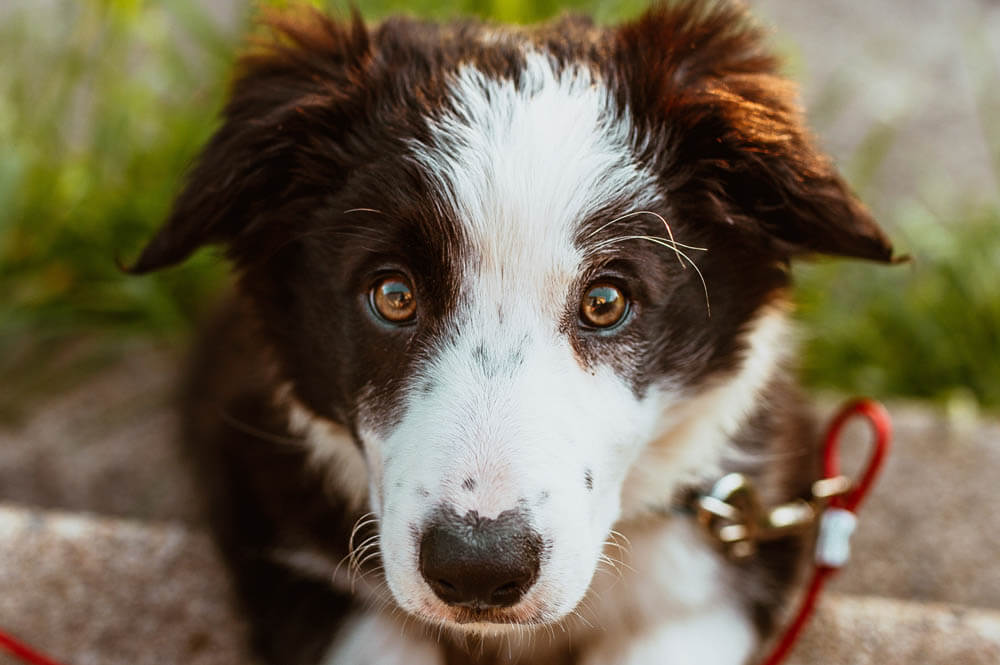
6. Your dog is confused
During training, does your dog tilt their head as they give you a blank look? If so, they’re probably confused by your lesson and they need you to clarify what you’re saying. So stop the lesson so your pooch can rest, then do some research on more effective training methods.
Your dog will also tilt their head and gawk at any strange thing that baffles them, such as a squeaky new toy or a YouTube video of howling wolves.
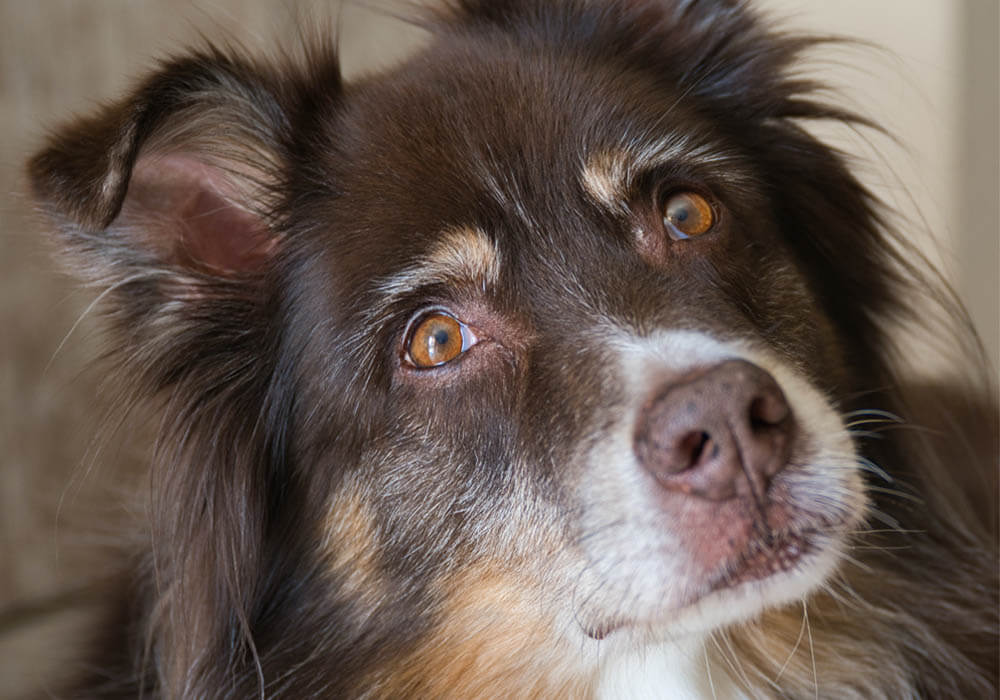
When Dog Staring Should Worry You
The other two other potential reasons why your dog stares at you should inform you not everything is all right with your pooch. In such cases, it’s best to observe your dog for mental or medical health issues, and seek help from professionals if necessary.
1. Aggression
“Why does my dog stare at me like he’s angry at me?”
Possibly because they feel threatened by you, so they display aggression to tell you they need you to back off.
Aggressive stares are often hard, unblinking, and steady and may be accompanied by a lowered head, bared fangs, raised hackles, and a stiff body. A dog may maintain hostile eye contact with another dog to establish dominance or to scare them into leaving them alone. However, if Fido is prone to anxiety, stress, and fear, he may also behave aggressively toward strange humans if he fears they’re a threat to him or to his owner. Your own dog might even give you this scary, hard stare from time to time.
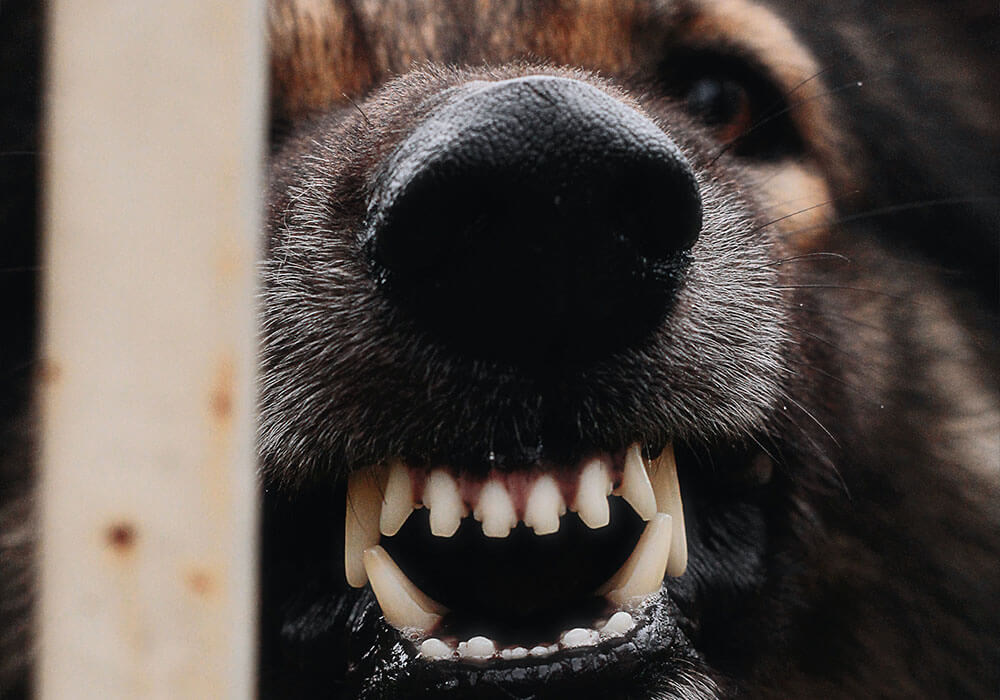
What to do:
If a dog stares at you aggressively, it’s best to break eye contact. They could interpret your staring back at them as a challenge, which could spur them to bite you.
Many aggressive dogs are dealing with psychological and/or medical issues. Maybe they were abused by their previous owner, or they’re suffering from a disease that’s causing a lot of pain. If you live with such a dog, seek help from a dog behavior expert regarding how to manage aggressive dogs.
You should also have a veterinarian and animal behaviorist examine your dog. Psychological problems can be treated using vet-prescribed medication, while behavioral issues can be unlearned using counterconditioning techniques. Also, any medical treatment that relieves your dog’s pain will improve their mood.
2. Canine cognitive dysfunction
Is your older dog staring at you as if you’re not really there? Do they also gaze blankly into space or at random spots in their environment? If so, they may have canine cognitive dysfunction (CCD), which is to dogs what Alzheimer’s disease is to people.
The other signs of CCD include:
- Confusion
- Aimless wandering
- Getting lost in familiar environments, such as their home
- Difficulty findings their things, such as their food/water bowl
- Difficulty remembering commands or their name
- Urinating or defecating where they’re not supposed to
- Difficulty eating
- Frequent trembling
- Repetitive movements
- Reduced activity
- Social withdrawal
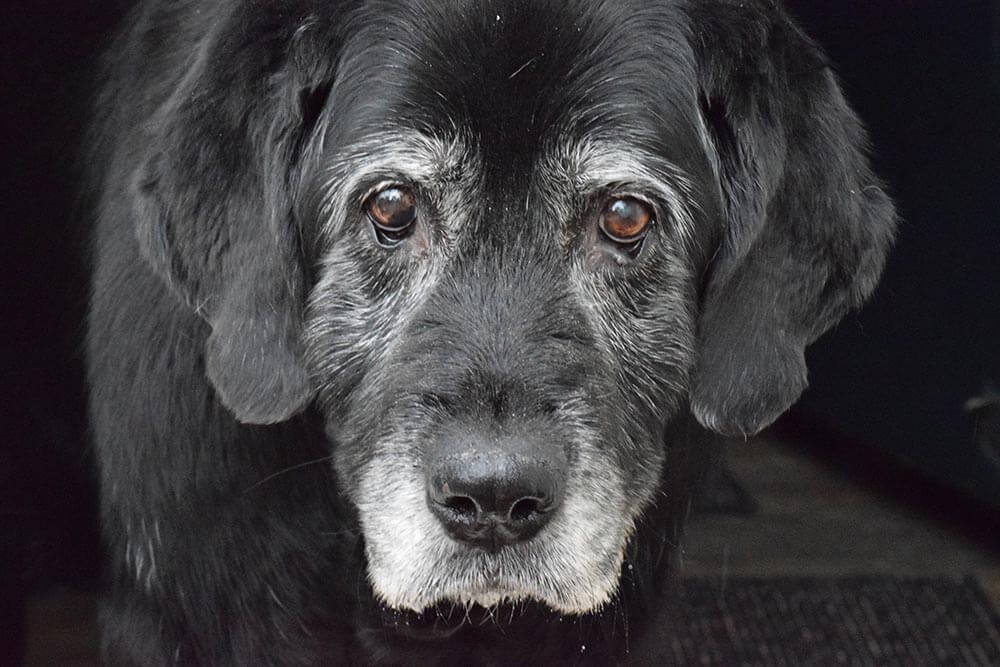
What to do:
If you notice such symptoms accompanying your dog’s staring habit, take them to the veterinarian for a proper diagnosis. Currently, there’s no cure for CCD. However, medication can help manage some symptoms and make your canine companion more comfortable.
Place your dog’s bed and food/water bowl where they can easily find them. Give them vet-approved dog food and ensure they get enough exercise. Observe a consistent routine, so always walk them and give them their pet food on time. Provide them with training and brain-teasing puzzle toys. Lastly, ensure your dog is easily identifiable so that if they get lost, they can be returned to you.
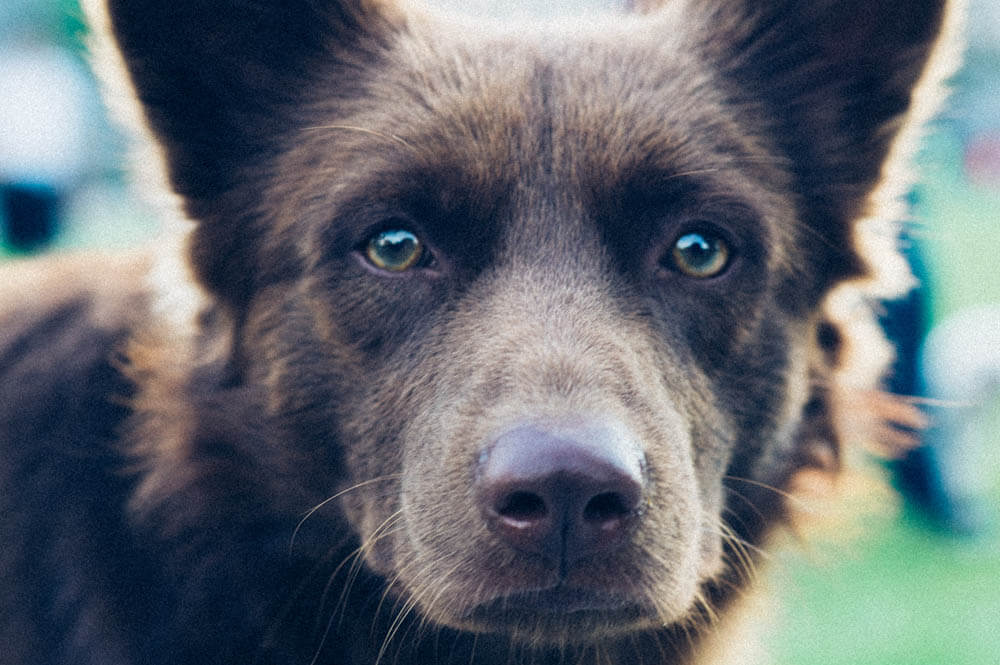
When Dogs Stare – The Conclusion!
Staring at their owners is normal for dogs. However, the reason your dog is staring at you is something you should learn to determine.
Pay attention to their body language. A stare accompanied by a gently wagging tail is different from one accompanied by a tilted head. A soft gaze is different from a hard stare or a blank, confused look.
Whatever the reason behind your dog’s staring, give your pooch all the love and attention they need, assist them when they truly require aid, and seek help from a veterinarian or pet behaviorist whenever necessary. Your devotion can ensure your dog stays healthy and happy!
